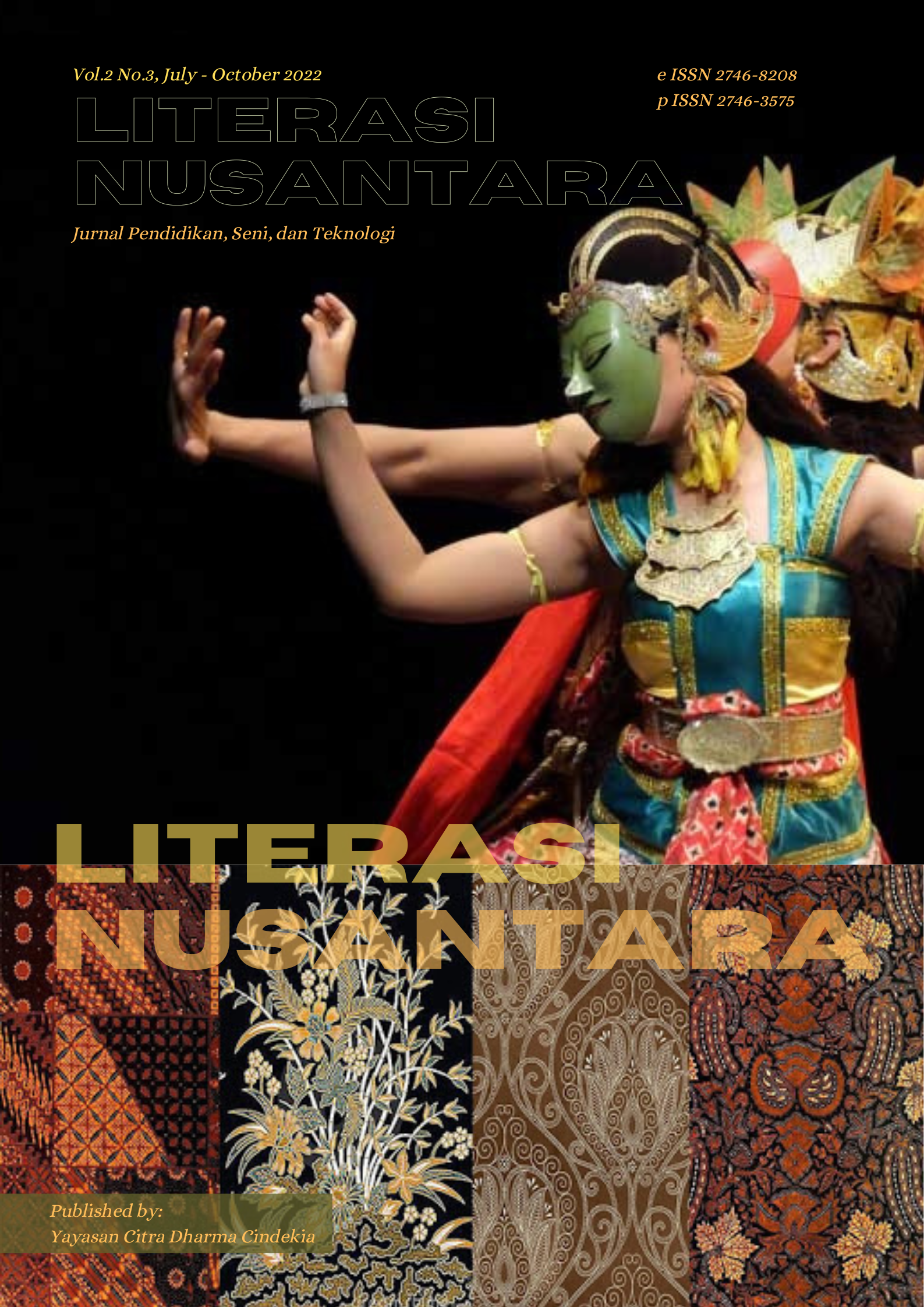Optimizing Technology Integration for Literacy Learning in Elementary Schools: Impact Analysis and Implementation Strategies
DOI:
https://doi.org/10.56480/jln.v2i3.913
 Abstract View:
Abstract View:
35
 PDF downloads:
PDF downloads:
28
Keywords:
Digital Literacy, Technology Integration, Elementary Education, Educational Technology, IndonesiaAbstract
This study examines the role of technology integration in enhancing literacy education at the elementary level in Indonesia, with three key objectives: (1) to analyze the impact of digital tools on student literacy outcomes, (2) to identify implementation challenges, and (3) to develop evidence-based recommendations for effective technology adoption. Using a mixed-methods approach, the research combined classroom observations (32 sessions), in-depth interviews with 18 educators, and analysis of policy documents from 2019-2022 across urban and rural schools in Bangkalan Regency. Findings reveal that technology significantly improves student engagement (39% longer reading durations in tech-enhanced classrooms) and literacy scores (27% growth in digital literacy versus 16% in conventional literacy). However, three critical barriers emerged: infrastructure gaps (78% of teachers reported device shortages), inadequate teacher training (only 62% felt prepared), and policy implementation inconsistencies (71% of schools lacked standardized protocols). The study concludes with four actionable recommendations: (1) equitable infrastructure development through a Digital Equity Initiative, (2) transformative teacher training programs with ongoing coaching, (3) data-driven policy implementation with 30% budget allocation for maintenance, and (4) ecosystem-building through public-private partnerships. These findings contribute to global discussions on educational technology while providing a contextual framework for Indonesia's literacy improvement efforts, suggesting that holistic, well-supported technology integration can bridge learning gaps when tailored to local needs.
References
Akram, H., Abdelrady, A. H., Al-Adwan, A. S., & Ramzan, M. (2022). Teachers’ perceptions of technology integration in teaching-learning practices: A systematic review. Frontiers in psychology, 13, 920317.
Bataller, C. (2018). Technology integration: A mixed methods study of best practices of technology integration as perceived by expert middle school teachers.
Gilster, P. (1997). Digital Literacy. Wiley Computer Pub.
Gomez, F. C., Trespalacios, J., Hsu, Y. C., & Yang, D. (2022). Exploring teachers’ technology integration self-efficacy through the 2017 ISTE Standards. TechTrends, 1-13.
Hero, J. L. (2019). The Impact of Technology Integration in Teaching Performance. Online Submission, 48(1), 101-114.
Huang, L., Li, S., Poitras, E. G., & Lajoie, S. P. (2021). Latent profiles of self‐regulated learning and their impacts on teachers’ technology integration. British Journal of Educational Technology, 52(2), 695-713.
Indonesian Ministry of Education and Culture. (2021). Panduan Integrasi Literasi Digital dalam Kurikulum Sekolah Dasar. Jakarta: Kemdikbud.
Indonesian Ministry of Education. (2022). Digital Literacy Framework for Basic Education.
Indonesian Ministry of Education. (2022). Digital Literacy Movement Annual Report. Jakarta.
Indonesian Ministry of Education. (2022). Laporan Program Pelatihan Guru dalam Literasi Digital. Jakarta: Kemdikbud.
Kemdikbud. (2021). Digital Learning Initiative Implementation Report.
Kemdikbud. (2021). National Assessment of Literacy and Numeracy in Elementary Schools. Jakarta.
LIPI. (2022). Survey on Student Reading Habits and Digital Usage in Indonesia. Jakarta.
National Literacy Movement (GLN). (2020). Survei Minat Baca Anak Indonesia 2020. Jakarta: Kemendikbud.
OECD. (2018). PISA 2018 Results: What Students Know and Can Do (Volume I). Paris: OECD Publishing.
OECD. (2021). 21st-Century Readers: Developing Literacy Skills in a Digital World.
Purnama, S., et al. (2022). The Impact of Gamified Learning on Literacy Engagement. Journal of Educational Technology, 15(3), 45-60.
Republic of Indonesia. (2022). National Digital Education Initiative. Jakarta: Ministry of Education.
SEAMEO. (2020). Innovative Teaching Strategies for Digital Literacy in Southeast Asia.
Trainin, G., Friedrich, L., & Deng, Q. (2018). The impact of a teacher education program re-design on technology integration in elementary preservice teachers: A five year multi-cohort study. Contemporary Issues in Technology and Teacher Education, 18(4), 692-721.
UNESCO. (2020). Global Education Monitoring Report: Inclusion and Education. Paris.
UNESCO. (2021). Education in a Post-COVID World: Nine Ideas for Public Action.
UNICEF. (2021). Bridging the Digital Divide in Indonesian Education. Jakarta.
World Bank. (2019). Blended Learning for Improved Education Access. Washington, DC.
World Bank. (2020). Improving Education Quality in Indonesia's Remote Areas. Washington, DC.
World Bank. (2022). Indonesia Digital Divide: Challenges in Rural Education Connectivity. Washington, DC: World Bank Group.
Downloads
Published
How to Cite
Issue
Section
Categories
License
Copyright (c) 2022 Agung Setyawan, Tyasmiarni Citrawati, Conny Dian Sumadi

This work is licensed under a Creative Commons Attribution-ShareAlike 4.0 International License.
Copyright Notice
Authors who publish with this journal agree to the following terms:
- Authors retain copyright and grant the journal right of first publication with the work simultaneously licensed under a Creative Commons Attribution-ShareAlike 4.0 International License that allows others to share the work with an acknowledgment of the work's authorship and initial publication in this journal.
- Authors are able to enter into separate, additional contractual arrangements for the non-exclusive distribution of the journal's published version of the work (e.g., post it to an institutional repository or publish it in a book), with an acknowledgment of its initial publication in this journal.
- Authors are permitted and encouraged to post their work online (e.g., in institutional repositories or on their website) prior to and during the submission process, as it can lead to productive exchanges, as well as earlier and greater citation of published work (See The Effect of Open Access).

This work is licensed under a Creative Commons Attribution-ShareAlike 4.0 International License.






























